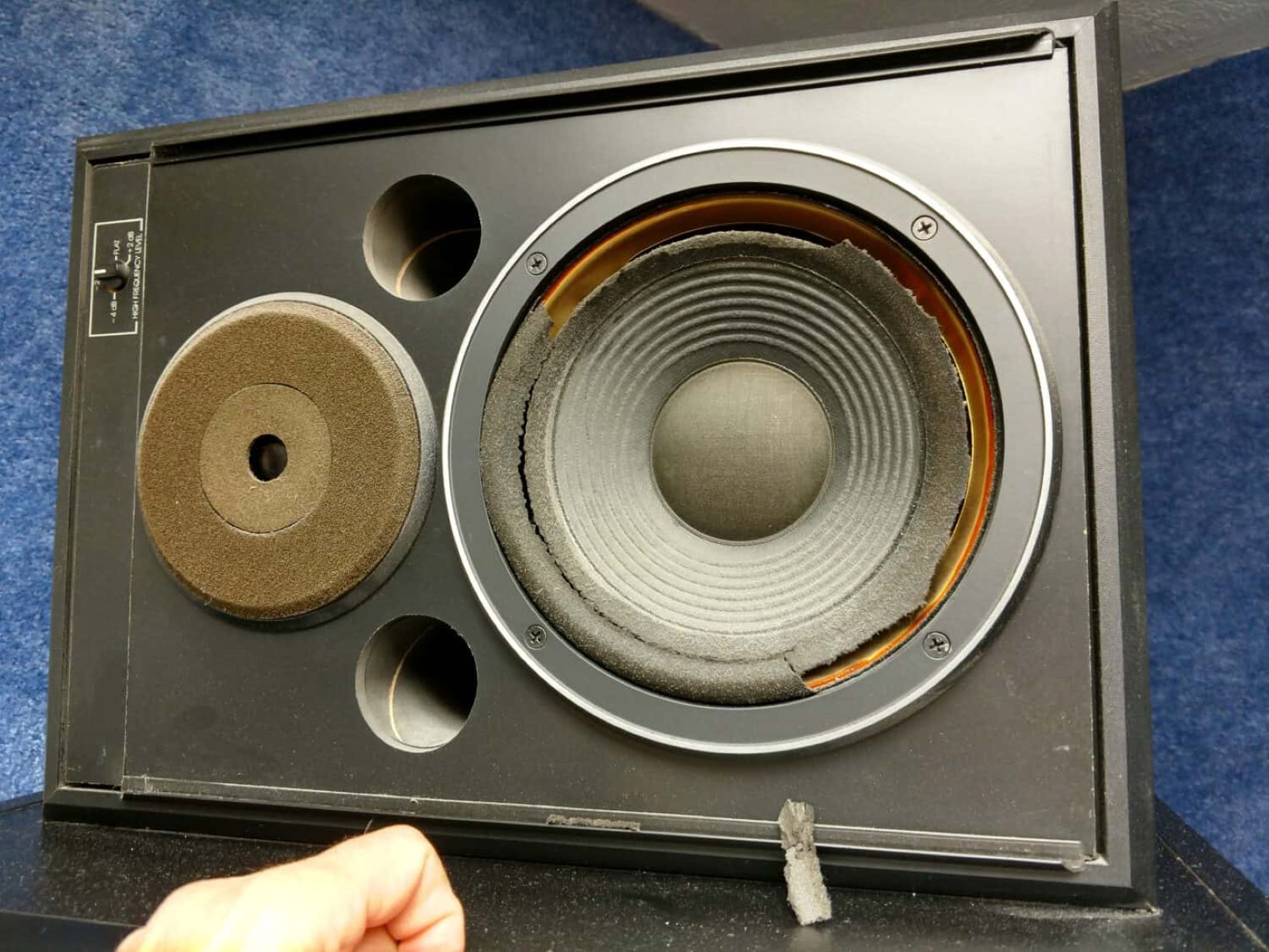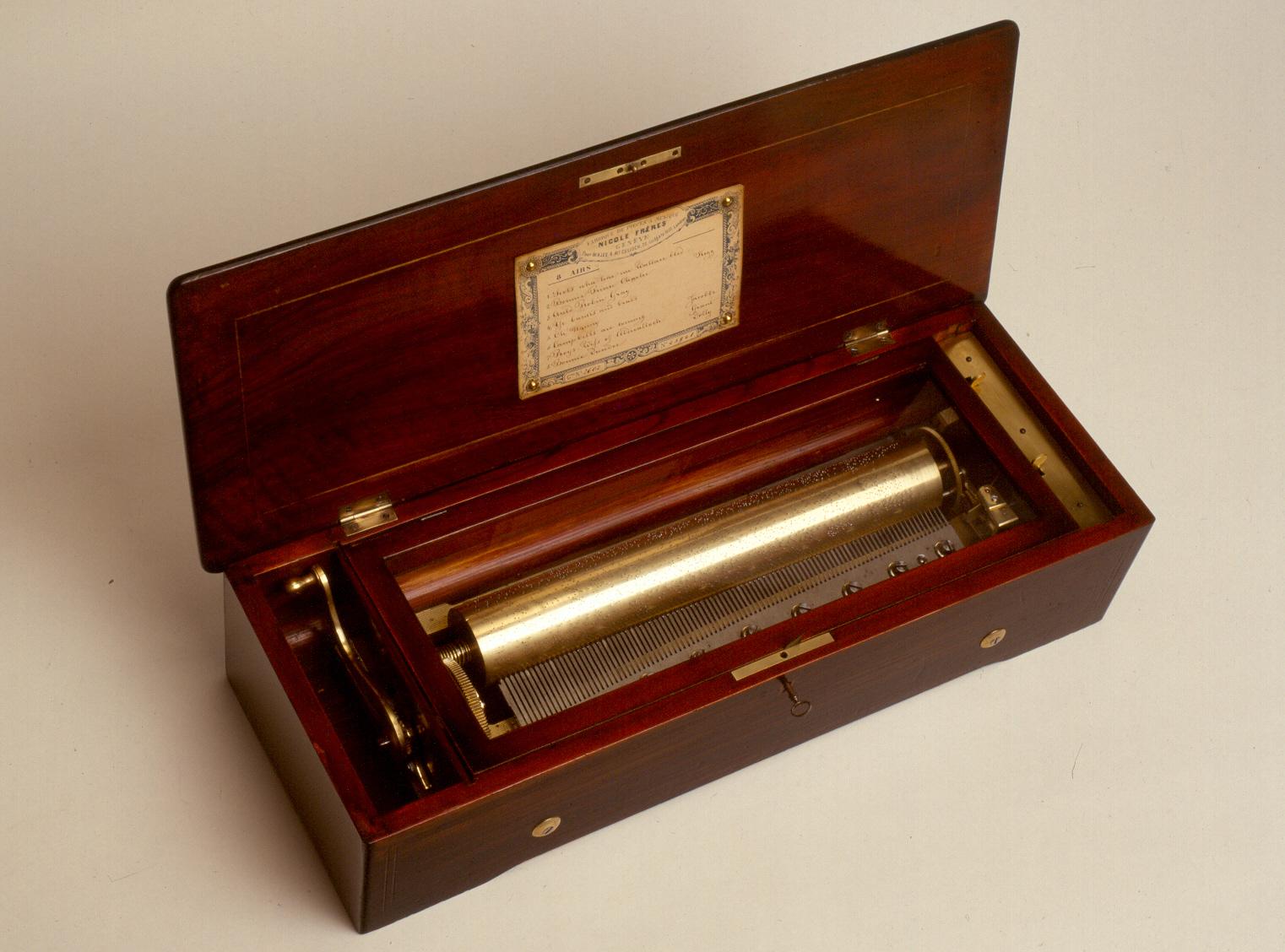Home>Devices & Equipment>Subwoofer>How To Tell If Subwoofer Is Blown


Subwoofer
How To Tell If Subwoofer Is Blown
Published: January 20, 2024
Discover if your subwoofer is blown with these simple steps. Don't let distorted bass ruin your audio experience. Learn how to troubleshoot and fix common subwoofer issues.
(Many of the links in this article redirect to a specific reviewed product. Your purchase of these products through affiliate links helps to generate commission for AudioLover.com, at no extra cost. Learn more)
Table of Contents
Introduction
Subwoofers are an integral component of any audio system, delivering deep, powerful bass that enhances the overall listening experience. However, like any piece of equipment, subwoofers can encounter issues over time, including becoming blown or damaged. Knowing whether your subwoofer is blown is essential for troubleshooting and taking appropriate action.
In this article, we will explore the various signs that indicate a blown subwoofer. From distorted sound to a lack of bass and even no sound at all, we will delve into the telltale signs that something may be wrong with your subwoofer. Additionally, we will provide you with methods to check the functionality of your subwoofer and offer insights into when professional assessment may be necessary.
Listening to music or watching movies with a blown subwoofer can significantly diminish the quality of sound reproduction and negatively impact your entertainment experience. Whether you’re a dedicated audiophile or simply enjoy a good bass rumble while watching action-packed films, understanding the signs of a blown subwoofer is crucial.
By familiarizing yourself with these signs, you’ll be able to identify the issue, assess the severity, and determine the best course of action to either repair or replace your subwoofer. So, let’s dive deeper and explore the various indicators that can help you identify whether your subwoofer is indeed blown.
Signs of a Blown Subwoofer
A blown subwoofer can manifest in a variety of ways, each indicating a potential issue with the speaker’s functionality. By recognizing these signs, you can address the problem promptly and restore optimal performance to your audio system. Here are some common indicators of a blown subwoofer:
- Distorted Sound: One of the primary signs of a blown subwoofer is distorted sound. If you notice that the bass sounds muddy, fuzzy, or unclear, it could be a red flag that the subwoofer is damaged. Distortion can manifest as crackling, popping, or buzzing sounds, which occur when the subwoofer attempts to produce low frequencies but fails due to damaged components.
- Lack of Bass: A noticeable lack of bass output is another indication that your subwoofer may be blown. If you used to feel the thump and rumble of deep bass frequencies but now find that the sound feels weak or nonexistent, it could be due to a damaged subwoofer. A blown subwoofer may struggle to produce low frequencies with the same power and clarity as before.
- Rattling or Vibration: When a subwoofer is blown or damaged, it might produce unexpected rattling or vibrations. This typically occurs when the speaker cone or other internal components are loose or damaged, causing them to vibrate against each other or the enclosure. If you hear rattling or can physically feel excessive vibrations coming from your subwoofer, it’s a sign that something is amiss.
- No Sound at All: In some cases, a blown subwoofer may produce no sound at all. If you can’t hear any audio coming from the subwoofer, even when you increase the volume or adjust the settings, it’s an indication that the speaker may be severely damaged or completely blown. This can be caused by a variety of factors, such as a blown voice coil or damaged amplifier.
It’s important to note that these signs alone may not definitively confirm a blown subwoofer. Other issues, such as faulty connections, damaged cables, or incorrect audio settings, can sometimes mimic the symptoms of a blown subwoofer. Therefore, it’s crucial to perform a thorough assessment to rule out any other potential causes before concluding that your subwoofer is indeed blown.
Distorted Sound
One of the primary indicators of a blown subwoofer is distorted sound. When a subwoofer is functioning properly, it should deliver clean, powerful bass notes that seamlessly integrate with the rest of the audio spectrum. However, if you notice that the bass sounds muddy, fuzzy, or unclear, it’s a strong indication that the subwoofer may be damaged.
Distortion in sound can manifest in various ways, including crackling, popping, or buzzing noises. These distortions occur when the subwoofer attempts to reproduce low frequencies but fails to do so accurately due to damaged components. A blown subwoofer may struggle to handle the power demands of deep bass and produce clean, undistorted sound.
When you experience distorted sound, it’s important to consider other possible causes, such as a faulty audio source, amplifier settings, or incorrectly configured audio settings. However, if you’ve ruled out these factors and the distortion consistently occurs when the subwoofer is in use, it is likely that the subwoofer is blown or damaged.
One way to determine if the distortion originates from the subwoofer is to disconnect any other speakers in your audio system and isolate the subwoofer. This will allow you to solely focus on the sound produced by the subwoofer. If the distortion persists in this isolated setup, it is a strong indication that the subwoofer itself is the source of the problem.
To diagnose and confirm the extent of the distortion, you can also connect the subwoofer to a different audio source or use a different cable. However, keep in mind that if the distortion persists across multiple sources or cables, it’s highly likely that the subwoofer requires repair or replacement.
Distorted sound not only detracts from your listening experience but may also indicate that further damage to the subwoofer can occur if left unaddressed. Therefore, if you notice consistent distortion in the bass output, it is advisable to take prompt action in troubleshooting or seeking professional assistance to rectify the issue.
Lack of Bass
A noticeable lack of bass output is another primary sign that your subwoofer may be blown or damaged. Subwoofers are specifically designed to reproduce low-frequency sounds, providing that deep, rumbling bass that adds depth and impact to music and movies. However, if you find that the bass sounds weak, diminished, or non-existent, it’s a clear indication that something may be wrong with your subwoofer.
When a subwoofer is functioning correctly, it should produce powerful and well-defined bass notes that complement and enhance the overall audio experience. If you previously enjoyed the visceral sensation of deep bass but now find that it lacks the same impact or intensity, it suggests that the subwoofer may not be functioning optimally.
A blown subwoofer may struggle to reproduce low frequencies with the same power and clarity as before. This can be caused by damage to the speaker cone, voice coil, or amplifier. When these components are compromised, their ability to accurately reproduce bass frequencies is compromised, resulting in a diminished bass response.
To determine if the lack of bass is specifically related to the subwoofer, you can perform a simple test. Disconnect the subwoofer from the audio system and play some bass-heavy content through the main speakers. If the main speakers can produce the desired bass response without any issues, it is a strong indicator that the subwoofer is the root cause of the lack of bass.
It’s essential to rule out other potential causes of reduced bass output before concluding that the subwoofer is blown. Check for proper audio settings, cable connections, and amplifier/AV receiver settings that may be affecting the subwoofer output. Sometimes, minor adjustments to these settings can restore the bass performance of the subwoofer.
However, if you’ve eliminated other potential causes and the lack of bass persists even after troubleshooting, it’s likely that the subwoofer requires further inspection or repair. In such cases, it is advisable to contact a professional or consult the manufacturer for guidance on the next steps to take.
Remember, a functional and properly operating subwoofer is essential for delivering the low-frequency impact and immersive experience that many audio enthusiasts crave. So if you notice a significant reduction in the bass output, it’s crucial to investigate and resolve the issue to restore the optimal listening experience.
Rattling or Vibration
When a subwoofer is blown or damaged, one of the noticeable signs is the presence of rattling or excessive vibrations. These unexpected noises and movements indicate that something is amiss with the internal components of the subwoofer.
Rattling can occur for several reasons. One possibility is that the speaker cone or other internal components have become loose or detached. When the subwoofer tries to produce bass frequencies, these loose components vibrate against each other or the enclosure, resulting in the rattling sound. This problem can be exacerbated if the subwoofer is played at high volume levels or exposed to excessive vibrations.
Vibrations can also occur if the enclosure is not properly secured or if the subwoofer itself is not mounted securely in place. As the subwoofer attempts to reproduce low frequencies, these vibrations can resonate throughout the area, potentially causing further damage or impacting the overall audio quality.
To determine if the rattling is originating from the subwoofer, conduct a visual inspection. Carefully examine the subwoofer’s enclosure, speaker cone, and other components to ensure they are securely fastened and free from any visible damage. Often, loose screws, detached speaker cones, or damaged enclosure materials can be the culprits behind the rattling issue.
Additionally, you can perform a listening test to identify whether the rattling noise occurs during specific frequencies or at different volume levels. Adjust the volume and bass settings while closely monitoring the subwoofer’s performance. If the rattling sound persists regardless of the audio content or the volume level, it’s a strong indication that the subwoofer is blown or damaged.
If the rattling is due to loose components or an improperly secured enclosure, it may be possible to fix the issue by tightening screws, repositioning the subwoofer, or reinforcing the enclosure. However, if the rattling persists after attempting these adjustments, it’s recommended to seek professional assessment or contact the manufacturer for further guidance.
Remember, allowing a rattling or vibrating subwoofer to continue operating can lead to further damage and potentially affect the overall performance of your audio system. Addressing the issue promptly through appropriate repairs or replacements will help restore the optimal functionality and prevent any potential long-term damage.
No Sound at All
One of the most obvious signs of a blown subwoofer is when it produces no sound at all. If you’re unable to hear any audio coming from the subwoofer, even when increasing the volume or adjusting the settings, it strongly suggests that the subwoofer is severely damaged or completely blown.
There can be several reasons for the complete absence of sound from a subwoofer. One possibility is a blown voice coil, which is responsible for converting electrical signals into sound waves. When the voice coil is damaged, it hampers the subwoofer’s ability to produce any sound at all.
Another potential cause for no sound is a faulty amplifier. The amplifier is responsible for providing power and signal amplification to the subwoofer. If the amplifier itself is not functioning correctly, it can result in a complete lack of sound output from the subwoofer.
To diagnose if a blown subwoofer is the cause of no sound, start by checking the connection between the subwoofer and the audio system. Ensure that the cables are securely connected and consider testing different cables to rule out any cable-related issues.
If the connections are secure and other troubleshooting steps have been taken, such as checking the audio settings and verifying that the amplifier is functioning correctly, yet the subwoofer remains silent, it is likely that the subwoofer itself is the primary problem.
At this point, it is essential to consider the age and condition of the subwoofer. If it is an older unit or has experienced extensive use, it may be more prone to failure or damage. In such cases, it is advisable to explore options for repairing or replacing the subwoofer.
Seeking professional assessment is highly recommended if you are unsure about the exact cause of the no-sound issue. An expert technician can diagnose the problem more accurately and provide guidance on the best course of action.
Remember, a subwoofer that produces no sound can significantly impact your audio experience, as the deep bass frequencies enhance the overall immersion and enjoyment. If you’re faced with a silent subwoofer, it’s crucial to address the issue promptly to restore the full functionality of your audio system.
Checking the Subwoofer
When you suspect that your subwoofer may be blown or damaged, it’s essential to perform some basic checks to assess its functionality. These checks can help you determine the extent of the problem and whether professional assistance is necessary. Here are some methods to check the integrity of your subwoofer:
- Visual Inspection: Start by visually examining the subwoofer for any visible signs of damage. Look for tears or holes in the speaker cone, loose wires or connections, or any physical damage to the enclosure. Pay close attention to the condition of the subwoofer’s components, as these can often provide clues about the subwoofer’s functioning.
- Listening Test: Connect the subwoofer to your audio system and play a variety of bass-heavy audio content. Listen carefully for any distortion, lack of bass, or abnormal sounds. Pay attention to the overall quality of the bass reproduction and compare it to your previous experience with the subwoofer. If you notice significant differences or inconsistencies in the sound output, it may indicate a problem with the subwoofer.
- Professional Assessment: If you are uncertain about the subwoofer’s condition or unable to determine the cause of any issues, it is advisable to seek professional assessment. An experienced audio technician can perform more advanced tests, diagnose the problem accurately, and provide recommendations for repair or replacement. They may utilize specialized equipment and techniques to evaluate the subwoofer’s performance and identify any potential faults.
It’s important to note that while these checks can provide valuable insights into the condition of your subwoofer, they may not always offer a definitive answer. Complicated issues or internal damage may require more in-depth analysis and professional expertise to fully understand and rectify the problem.
If you opt for professional assessment, it’s recommended to reach out to authorized service centers or consult with the manufacturer directly. They can guide you through the appropriate steps to follow and provide you with the necessary information to determine whether repairs are feasible or if a replacement is more appropriate.
Remember, accurate evaluation of the subwoofer’s condition is crucial in determining the best course of action. Whether it can be repaired or needs to be replaced, addressing any issues with your subwoofer promptly will help restore the optimal audio performance of your system and ensure an enjoyable listening experience.
Visual Inspection
A visual inspection is an essential step in checking the condition of your subwoofer and identifying any visible signs of damage or wear. By examining the subwoofer closely, you can gather valuable information about its overall health. Here are some key aspects to consider during a visual inspection:
- Speaker Cone: Inspect the speaker cone for tears, punctures, or any signs of physical damage. These issues can significantly impact the subwoofer’s performance and result in distorted or compromised sound reproduction. A damaged cone may require repairs or, in severe cases, a complete replacement of the subwoofer driver.
- Enclosure: Examine the subwoofer enclosure for any cracks, dents, or loose parts. The enclosure plays a crucial role in enhancing bass performance and protecting the internal components. If the enclosure is damaged, it can affect the overall sound quality and potentially lead to further issues. Ensure that the enclosure is secure and free from any obstructions that could impede the subwoofer’s movement.
- Wires and Connections: Check the wires and connections coming from the subwoofer. Look for any loose or disconnected wires, or signs of fraying or damage. Faulty wiring can result in intermittent or no sound output from the subwoofer. Ensure that the connections are secure and properly plugged into the appropriate audio source or amplifier.
- Internal Components: If possible, examine the internal components of the subwoofer. This may require removing the speaker grill or disassembling the enclosure. Look for signs of damage or wear on the voice coil, spider, or magnet assembly. These internal components are essential for the subwoofer’s operation and any indications of damage may require professional attention.
During the visual inspection, it’s important to take note of any visible issues and compare them to the subwoofer’s previous condition. Sometimes, a quick visual inspection can reveal evident problems that are affecting the performance of the subwoofer.
However, it’s worth mentioning that not all problems may be immediately visible. Internal damage or electronic issues may not be apparent through a visual inspection alone. In such cases, additional diagnostic measures may be necessary to fully understand the extent of the issue.
If you discover any significant visible damage or are unsure about the subwoofer’s condition after the visual inspection, it’s recommended to seek professional assistance. An experienced technician can provide a more thorough assessment and determine the best course of action to repair or replace the subwoofer.
Remember, a visual inspection is an important initial step in evaluating the subwoofer’s condition. By identifying any visible damage or wear, you can gain insights into potential issues and make informed decisions on the necessary next steps to ensure optimal subwoofer performance.
Listening Test
A listening test is a vital method to assess the functionality and performance of a subwoofer. By critically evaluating the sound output during different audio playback, you can gather valuable information about the subwoofer’s operation. Follow these steps to conduct a thorough listening test:
- Selection of Audio Content: Choose a range of audio content that includes bass-heavy tracks, such as music or movies known for their low-frequency effects. This variety will allow you to evaluate the subwoofer’s response across different frequencies and dynamic ranges.
- Bass Clarity and Definition: Listen carefully to the bass output produced by the subwoofer. Is the bass clear and well-defined, or does it sound muddled and indistinct? A functioning subwoofer should deliver crisp, articulate bass notes that seamlessly integrate with the rest of the audio spectrum.
- Distortion or Abnormal Sounds: Pay attention to any distortion, crackling, popping, or buzzing noises during playback. These abnormalities can be indicators of a blown or damaged subwoofer. If you notice any irregularities, it’s a sign that there may be issues with the subwoofer’s components or its ability to handle low-frequency reproduction.
- Bass Impact and Depth: Evaluate the impact and depth of the bass produced by the subwoofer. Does it deliver the desired thump and rumble, adding depth and immersion to the audio? If you find that the bass lacks the same power or intensity as before or feels weak, it might indicate a problem with the subwoofer’s performance.
- Consistency: Listen to the subwoofer’s performance across different audio tracks and volume levels. Note any inconsistencies or variations in the bass output. A properly functioning subwoofer should consistently deliver a balanced and even bass response, irrespective of the audio material or volume setting.
During the listening test, take specific note of any significant deviations or changes in the subwoofer’s performance compared to its previous functionality. If you notice significant distortions, lack of bass, or irregularities in the sound output, it indicates that there may be a problem with the subwoofer.
It’s important to remember that the listening test may not always provide a definitive diagnosis of the issue. Other factors, such as audio source quality, settings, or calibration, can also impact the subwoofer’s performance. Therefore, it’s crucial to rule out any external factors before concluding that the subwoofer is indeed blown or damaged.
If you consistently encounter issues during the listening test or are uncertain about the subwoofer’s performance, it’s recommended to seek professional assessment. An audio technician can conduct more advanced tests and diagnostics to accurately identify the problem and provide necessary recommendations for repair or replacement.
By conducting a comprehensive listening test, you can effectively evaluate the subwoofer’s functionality and make informed decisions about the appropriate steps to address any issues encountered.
Professional Assessment
When dealing with a potentially blown subwoofer, a professional assessment can be valuable in determining the exact cause of the issue and providing appropriate solutions. Engaging the expertise of an audio technician or contacting the manufacturer’s authorized service center can offer a more accurate diagnosis and guide you towards the most effective course of action.
Here are some key advantages of seeking a professional assessment for your subwoofer:
- Expertise and Experience: Audio technicians possess specialized knowledge and experience in diagnosing and repairing audio equipment, including subwoofers. They have the necessary tools and skills to conduct more intricate tests and assessments, allowing them to identify specific faults or damages that may not be immediately apparent.
- Advanced Diagnostics: Professional assessment often involves advanced diagnostic tools and equipment that can measure and analyze the performance of your subwoofer more precisely. Audio technicians may use specialized audio analyzers, impedance tests, or computer-based systems to evaluate the subwoofer’s functionality accurately.
- Insight into Repair Options: Should your subwoofer require repair, a professional assessment can provide insight into the specific repairs needed and the associated costs. Audio technicians can help determine whether the subwoofer is worth repairing or if replacement is a more advantageous option based on factors such as the extent of the damage, the age of the subwoofer, and the availability of parts.
- Manufacturer Support: If your subwoofer is still covered under warranty, a professional assessment from an authorized service center can help you navigate the warranty coverage and ensure that any repairs or replacements adhere to the manufacturer’s guidelines. This can save you potential costs and complications that may arise from attempting DIY repairs or seeking unauthorized service.
A professional assessment is particularly recommended if you have exhausted other troubleshooting options, are uncertain about the subwoofer’s condition, or lack the necessary expertise to diagnose and repair the subwoofer yourself. Investing in professional assessment will provide you with accurate and reliable information, enabling you to make informed decisions about the future of your subwoofer.
When seeking professional assessment, it’s important to contact reputable audio technicians or authorized service centers. Research customer reviews, check for certifications, and reach out to trusted sources for recommendations to ensure you’re entrusting your subwoofer to knowledgeable professionals.
Remember, a professional assessment can provide you with the guidance and support needed to determine the best course of action for your subwoofer. Whether it’s repair, replacement, or other solutions, the expertise of audio technicians will help ensure that you restore the optimal performance of your subwoofer and continue to enjoy high-quality audio experiences.
Conclusion
Recognizing the signs of a blown subwoofer is essential for maintaining the audio quality and overall performance of your audio system. Whether you notice distorted sound, a lack of bass, rattling or vibrations, or even no sound at all, identifying these indicators can help you take appropriate action to address the issue.
Throughout this article, we have explored the various signs of a blown subwoofer and provided methods for checking its functionality. From conducting a visual inspection to performing a listening test, these steps can help you gauge the condition of your subwoofer and determine the severity of any underlying issues.
However, it’s important to note that while these preliminary assessments can provide valuable insights, they may not always offer a definite diagnosis. In such cases, seeking professional assessment from audio technicians or authorized service centers is highly recommended. Their expertise and advanced diagnostics can pinpoint the specific problem and guide you towards the most suitable solution, whether it involves repair or replacement.
Remember to take prompt action when you suspect a blown subwoofer. Ignoring the signs or delaying necessary repairs can lead to further damage and potentially affect the performance of your entire audio system.
By staying vigilant and addressing any issues with your subwoofer, you can ensure the optimal reproduction of deep, powerful bass and enjoy a more immersive audio experience.
So, if you notice any of the signs we’ve discussed throughout this article, don’t hesitate to conduct the necessary checks and seek professional assistance. With the right steps and timely intervention, you’ll be back to enjoying the heart-thumping bass that adds depth and excitement to your favorite music and movies.











